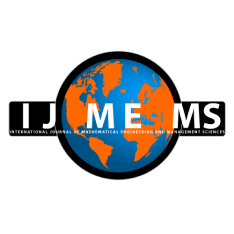Mohammad A. Shbool
Industrial Engineering, College of Engineering & Computing, American University of Bahrain, 942, Riffa, Bahrain. Industrial Engineering, School of Engineering, The University of Jordan, 11942, Amman, Jordan.
Yara Altarawneh
Industrial Engineering, The University of Texas at San Antonio, San Antonio, TX 78249, USA.
Raghad Bani Hamad
Industrial Engineering, School of Engineering, The University of Jordan, 11942, Amman, Jordan.
Rand Alqa'aydeh
Industrial Engineering, School of Engineering, The University of Jordan, 11942, Amman, Jordan.
Mohammad D. Al-Tahat
Industrial Engineering, School of Engineering, The University of Jordan, 11942, Amman, Jordan.
Thahabia Abedeljawad
Quality Department, Jordan University Hospital, 11942, Amman, Jordan.
Sahar ALMashaqbeh
Industrial Engineering, The Hashemite University, Zarqa, Jordan.
DOI https://doi.org/10.33889/IJMEMS.2025.10.6.107
Abstract
This study aims to develop a system dynamics model to predict healthcare waste generation and associated costs, focusing on hazardous healthcare waste. Systems dynamics approach is utilized to analyze the complex dynamics of healthcare waste management. Data collection involves precise waste categorization across 46 departments of Jordan University Hospital, facilitating the development of a comprehensive model. The developed model accurately predicts future hazardous healthcare waste output and estimates disposal costs, considering various waste types and operational limitations. Sensitivity analysis demonstrates the model's stability, with consistent predictions across different parameter values and forecast accuracy within 5% for most waste categories. The study further evaluates two disposal scenarios for formalin chemical waste: outsourcing to external treatment providers versus internal treatment using a hospital-installed system. Scenario 2, internal treatment, could reduce chemical waste disposal costs by approximately 80%, corresponding to about a 6.45% reduction in total hazardous waste disposal costs (medical + chemical combined) in the forecast year 2031. Scenario 1, removing the hospital’s internal disposal machine and relying solely on external services, results in significantly higher long-term waste management costs. Over the next decade, the model predicts patient admissions to increase from 699,925 in 2021 to 797,434 in 2031, driving medical waste from 164,982 kg to 187,967 kg and chemical waste from 2,371.5 kg to 2,701.89 kg. Long-term projections indicate waste management expenses could rise by 167% by 2041, 268% by 2051, and exceed 500% by 2071 if current practices continue. Integrating system dynamics modeling into healthcare waste management offers a comprehensive approach, considering environmental, epidemiological, and economic dimensions. This provides a versatile tool for optimizing resource allocation, reducing expenses, and enhancing patient and healthcare staff safety, particularly during crises like the COVID-19 pandemic. This study contributes to the field by developing a novel system dynamics model that independently predicts chemical waste and provides distinct forecasts for each department. It also estimates costs for hazardous waste disposal in hospitals and assesses alternative scenarios, offering insights into waste creation and management strategies. This study does not investigate the causes of excessive waste generation in specific departments. Future research could explore this aspect and further integrate recycling practices into the model and hospital waste management systems.
Keywords- System dynamics, Medical waste, Healthcare waste, Healthcare policies.
Citation
A. Shbool, M., Altarawneh, Y., Hamad, R. B. Alqa'aydeh, R., Al-Tahat, M. D., Abedeljawad, T., & ALMashaqbeh, S. (2025). Improving the Management of Healthcare Waste in Developing Countries: Applying a System Dynamics Approach. International Journal of Mathematical, Engineering and Management Sciences, 10(6), 2318-2343. https://doi.org/10.33889/IJMEMS.2025.10.6.107.



